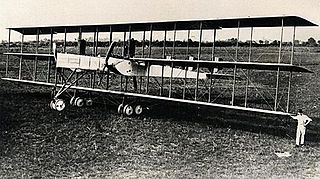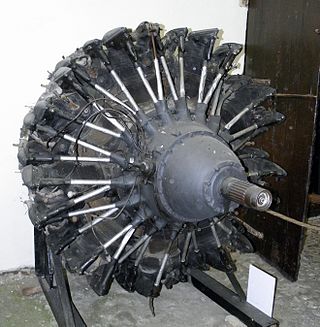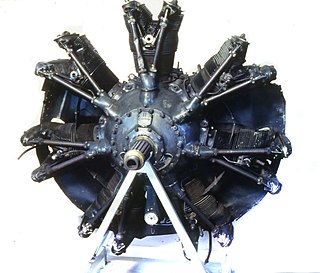
The Caproni Ca.4 was an Italian heavy bomber of the World War I era.

The Caproni Ca.2 was an Italian heavy bomber of the World War I era.

The Piaggio P.XI was an Italian 14-cylinder radial aircraft engine. The P.XI was a licensed derivative of the French Gnome-Rhône Mistral Major 14K produced in Italy.

The Savoia-Marchetti SM.75 Marsupiale was an Italian passenger and military transport aircraft of the 1930s and 1940s. It was a low-wing, trimotor monoplane of mixed metal and wood construction with a retractable tailwheel undercarriage. It was the last of a line of transport aeroplanes that Alessandro Marchetti began designing in the early 1930s. The SM.75 was fast, robust, capable of long-range flight and could carry up to 24 passengers for 1,000 miles.

The Meridionali Ro.37 Lince was a two-seater Italian reconnaissance biplane, a product of the Industrie Meccaniche Aeronautiche Meridionali (IMAM) company. It appeared in 1934 and had a composite structure of wood and metal. The aeroplane first saw operational duty in the Second Italo-Ethiopian War (1935–1936) and Spanish Civil War (1936–1939), and during the Second World War it saw duty on almost all fronts, except for Russia and the English Channel. It followed the Ro.1 as the main reconnaissance aircraft for the Italian Army.

Mario Pezzi was an Italian aviator known worldwide for his flight in which he achieved greater height than any other pilot in a propeller-powered airplane.

The Caproni Ca.135 was an Italian medium bomber designed in Bergamo in Italy by Cesare Pallavicino. It flew for the first time in 1935, and entered service with the Peruvian Air Force in 1937, and with the Regia Aeronautica in January 1938.

The Caproni Ca.165 was an Italian biplane fighter developed just before World War II, but produced only as a prototype, as the competing Fiat CR.42 Falco was selected for series production.

The Savoia-Marchetti SM.78 was an Italian bomber/reconnaissance biplane flying boat of the early 1930s.

The Piaggio P.119 was an Italian experimental fighter of World War II. It had a relatively novel layout, with a "buried" radial engine mounted mid-fuselage. Only a single prototype was built before the Armistice between Italy and the allied armed forces, which ended the project.
The Piaggio P.32 was an Italian medium bomber of the late 1930s, produced by Piaggio, and designed by Giovanni Pegna. It was a modern design for its time, but was a failure due to lack of powerplants commensurate with its high wing loading.

The Junkers Ju 49 was a German aircraft designed to investigate high-altitude flight and the techniques of cabin pressurization. It was the world's second working pressurized aircraft, following the Engineering Division USD-9A which first flew in the United States in 1921. By 1935, it was flying regularly to around 12,500 m (41,000 ft).

The Caproni CH.1 was a single-seat biplane fighter, a single example of which was produced as a prototype in Italy in 1935.

The Caproni Ca.331 Raffica was an Italian aircraft built by Caproni in the early 1940s as a tactical reconnaissance aircraft/light bomber and also as a night fighter.

The Piaggio P.111 was an Italian high-altitude research aircraft designed and built by Piaggio for the Regia Aeronautica.

The Piaggio P.XII is an Italian 18-cylinder radial aircraft engine developed in the 1930s by Rinaldo Piaggio S.p.A. The P.XII was two Piaggio P.X engines in tandem, which were versions of the French Gnome-Rhône 9K Mistral made under license, themselves being much modified Gnome-Rhône 9A - a license-built Bristol Jupiter.

The Piaggio Stella P.VII was the first P series aircraft engine produced by Rinaldo Piaggio S.p.A. Based on its experience license-producing the Gnome-Rhône 7K, Piaggio sold the engine to be used on a wide range of Italian aircraft before and during World War II, including the record-breaking Caproni Ca.133.

The Caproni Ca.134 was a biplane reconnaissance aircraft built by the Italian company Caproni in the 1930s.
The Caproni Ca.66 and Caproni Ca.67 were Italian night bomber aircraft designed to re-equip the post-World War I Regia Aeronautica.
The Caproni Ca.142 was a three-engined multirole aircraft built by Caproni in the mid-1930s.


















